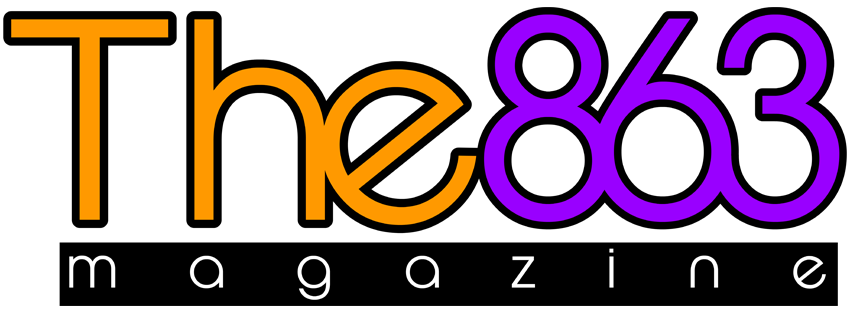Lake Region Audubon Society: Birdwatching
By Meredith Jean Morris
Spring can be a busy time for Polk County residents, with weekends filled with everything from baseball games to festivals. And those who take the time to explore the out-of-doors and smell the roses might find more of their senses awakened to a springtime symphony.
Polk County is home to 37 nature parks nestled on more than 25,000 preserved acres, and these natural lands are prime locations to view some of Central Florida’s most colorful, melodious residents and winter visitors.
“Central Florida has some of the best habitats for birds,” says Reinier Munguia, president of the Lake Region Audubon Society, located at 115 Lameraux Rd. in Winter Haven. “There’s so much water: A great place to see water fowls, egrets, wading birds. Most of Florida’s endangered birds can be found here, such as the scrub jay. One of its strongholds is the Lake Wales Ridge.”
A fast-growing hobby in North America, birding is fun for all ages and the Lake Region Audubon Society’s Bird Club is a great way to get started.
The club meets Thursdays for birding expeditions around Central Florida.
“For first timers, I start with the basics — making sure they have binoculars,” says Bob Snow, who heads up the Lake Region Audubon Society Bird Club. “I then point out the larger birds — the ones that are easiest to spot. Then, I’d move onto the harder ones that tend to be smaller.”
For people interested in bird watching, Snow recommends 7 x 35 or 8 x 35 binoculars for starting out.
“Inexpensive is what you’re looking for at the beginning,” he says. “Those have a good range and a wide angle for view.”
Snow leads people through marshes at Circle B Bar Reserve in Lakeland many Saturday mornings, carrying a spotting scope and describing the birds he sees.
“We take about three hours looking for birds,” Snow says. “Sometimes there are two or three people, other times, we’ll have as many as 16 in our groups. All ages are welcome.”
The birding excursions are held November through April, during the peak time to see migrant birds flying south to escape colder temperatures, he says.
“Because of the climate here, birding is a great hobby for Florida,” Snow says. “You typically can get out year round. There are a lot of natural areas to see birds, but it’s also possible to see them around your home. I have hummingbirds at my house year round.”
Snow suggests that people with an interest in birding look for resources online, or check with a local organization like the Audubon Society.
The Audubon Society connection was one way Cole Fredricks started birding with some local groups.
“I was using an online citizen science database to update about bird species I’d spotted,” he says. “I had spotted some geese on a lake that you wouldn’t expect to see this time of year. Someone from the Audubon Society called me about what I’d seen.”
That call led Fredricks to get involved with the Audubon’s annual Christmas Bird Count.
“The first time I went out, I was hooked, addicted,” he says. “There are multiple counts per winter. It’s the Audubon’s big deal, we just completed the 51st annual one in Lakeland.”
Fredricks says the Christmas Bird Count is designed to see broad trends in bird movements and the abundance of different species.
“We essentially draw a circle in a 15-mile radius and put out as many people as we can to count as many birds as they can during a 24-hour period,” he says. “These are one of the pieces that help to guide conservation nationwide.”
Fredricks says the annual bird counts are a great way to try out birding.
“It becomes a local competition,” he says. “We’ve seen as many as 151 species. Last winter we saw 145. The counts are a great way to hook people on birding.”
Fredricks says he’ll always remember the first time he felt the thrill of bird watching.
“My wife and I went out to the Tenoroc Fish Management Area; there were so many birds,” he says. “There were some that I realized what they were, like the red wing blackbirds, but there were others I didn’t know. The area is part of the Great Florida Wildlife Trail, so I picked up a checklist of birds to see. I remember seeing listed a bittern, and I remember thinking, ‘What is an American bittern?’ I bought a field guide later, and I was hooked.”
Fredricks says seeing as many birds as possible becomes a game for birders like him.
“You’ve got to collect them all,” he says of sightings.
Snow echoed Fredricks’s enthusiasm.
“Bird watching is like a treasure hunt,” Snow says. “You don’t always know what you’re going to find.”
Visiting Lake Region Audubon’s property is free. The meandering trails behind the meeting house lead to a dock overlooking Lake Ned. It makes for a tranquil outing, whether the birds make their presence known or not. Audubon visitors will definitely hear the birds, even if they can’t see them.
For information about the Lake Region Audubon Society and its Bird Club, visit LakeRegionAudubon.org or call 863-259-8497.
